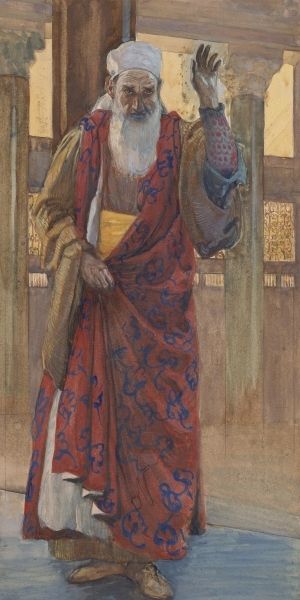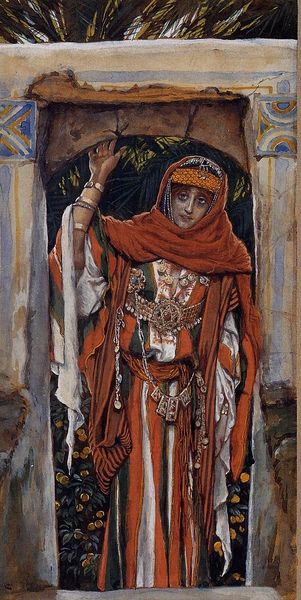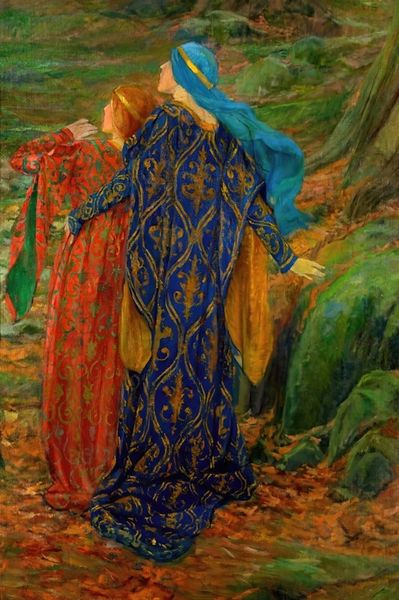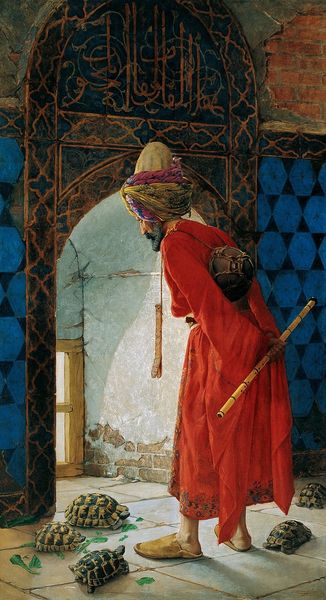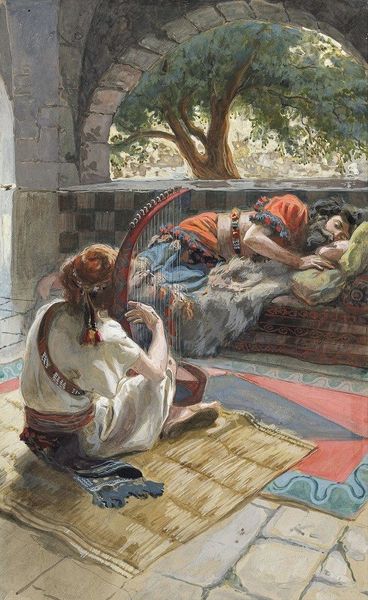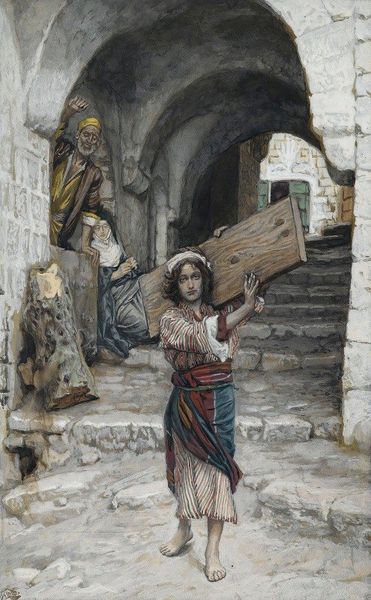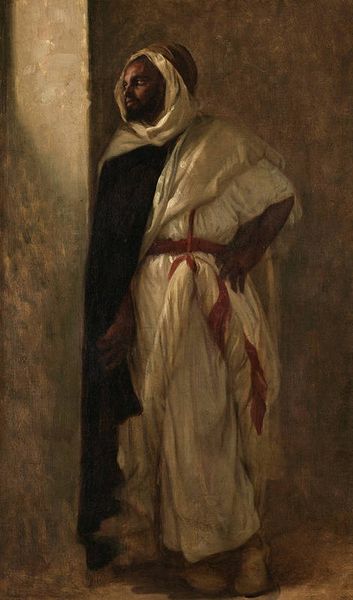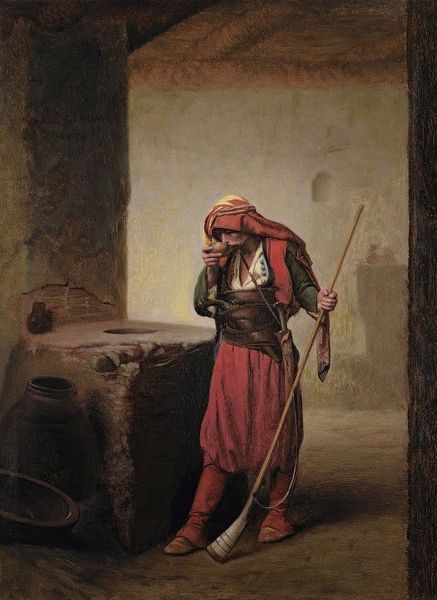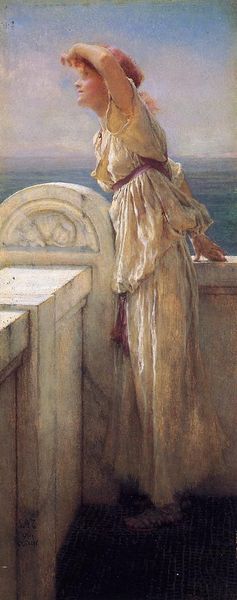
painting, watercolor
#
portrait
#
the-ancients
#
painting
#
figuration
#
oil painting
#
watercolor
#
romanticism
#
genre-painting
#
history-painting
#
pre-raphaelites
#
portrait art
#
realism
Copyright: Public domain
Curator: James Tissot created this work, entitled "The Repentant Magdalene". It is currently housed at the Brooklyn Museum. Editor: Wow. The somber mood hits you immediately, doesn't it? She's got this... resignation, almost a tired sorrow. Like she's waited by that door forever. Curator: Absolutely. Tissot situates the Magdalene at a liminal space, pressed against the door, hinting at the blurred lines between inside and outside, the self and the world's expectations of her. Consider, too, the Victorian context—the archetype of the fallen woman and the Magdalene as a complex figure straddling piety and societal transgression. Editor: She’s drenched, visually, too. Look how the colors seem to run – that watery effect almost mimics tears blurring your vision. And yet, there’s something strong in her posture even slumped like that, don't you think? A core of resilience despite it all. It’s kind of inspiring in a dark way. Curator: I agree. It invites us to question conventional morality and think more expansively about repentance, redemption, and the gaze turned back on those who would judge. She subverts those readings simply by occupying this moment, visibly enduring. Tissot gives space to acknowledge those intersectional dimensions of gender, religion, and societal condemnation. Editor: And there's just something deeply, almost brutally honest about her expression, as if she's not playing a part. The real pain feels laid bare. I think that’s what keeps me hooked. Maybe its the quietness too - so rare, usually these scenes are full of action. She gets to have her own, private moment, no performative theatrics necessary. Curator: Precisely. And while religious paintings frequently depicted women within symbolic frameworks, Tissot allows her quiet agency. The dampness adds another layer to her portrayal. Water, an element of purification, may symbolize spiritual cleansing, but she remains firmly outside. A point that is ripe with ambiguity. Editor: You know, thinking about it, she feels really present in the here and now – makes you wonder, doesn't it? How often do we all feel like standing outside a door, waiting, carrying secrets and the weight of judgements? Art like this blurs past and present in powerful ways, I think. Curator: I agree. By lingering on the threshold between condemnation and potential redemption, we’re compelled to examine societal narratives and the individuals often relegated to the margins. Editor: Definitely food for thought.
Comments
No comments
Be the first to comment and join the conversation on the ultimate creative platform.
